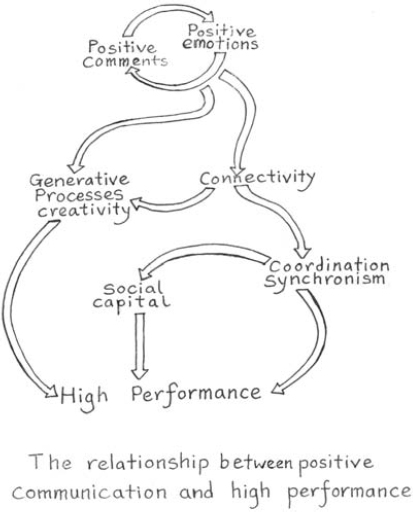Leadership and Positive Communication
Cameron points out that supportive and positive communication needs to be modelled by leaders; it needs to be genuine, authentic and sincere. For many leaders this would necessitate a fundamental shift in their worldview. If as a leader your career success has been predicated on being able to spot the flaws, point out the shortcomings and name the problems, then shifting gear to a primary focus on spotting strengths, pointing out the achievements and naming successes is a challenging shift in focus. For many it means putting their much-prized critical evaluation skills to one side and developing instead their positivity generating skills. Such a shift necessitates the development of an appreciative ear and eye. It rests on working to draw the best out of people, not correcting their faults. This is not an easy shift for many to make, and we discuss what this means for leaders in Chapter 5. Meanwhile organizational processes can also be adapted to promote positive communication.

Figure 4.1 Positivity.
Get Positive Psychology at Work: now with the O’Reilly learning platform.
O’Reilly members experience books, live events, courses curated by job role, and more from O’Reilly and nearly 200 top publishers.

